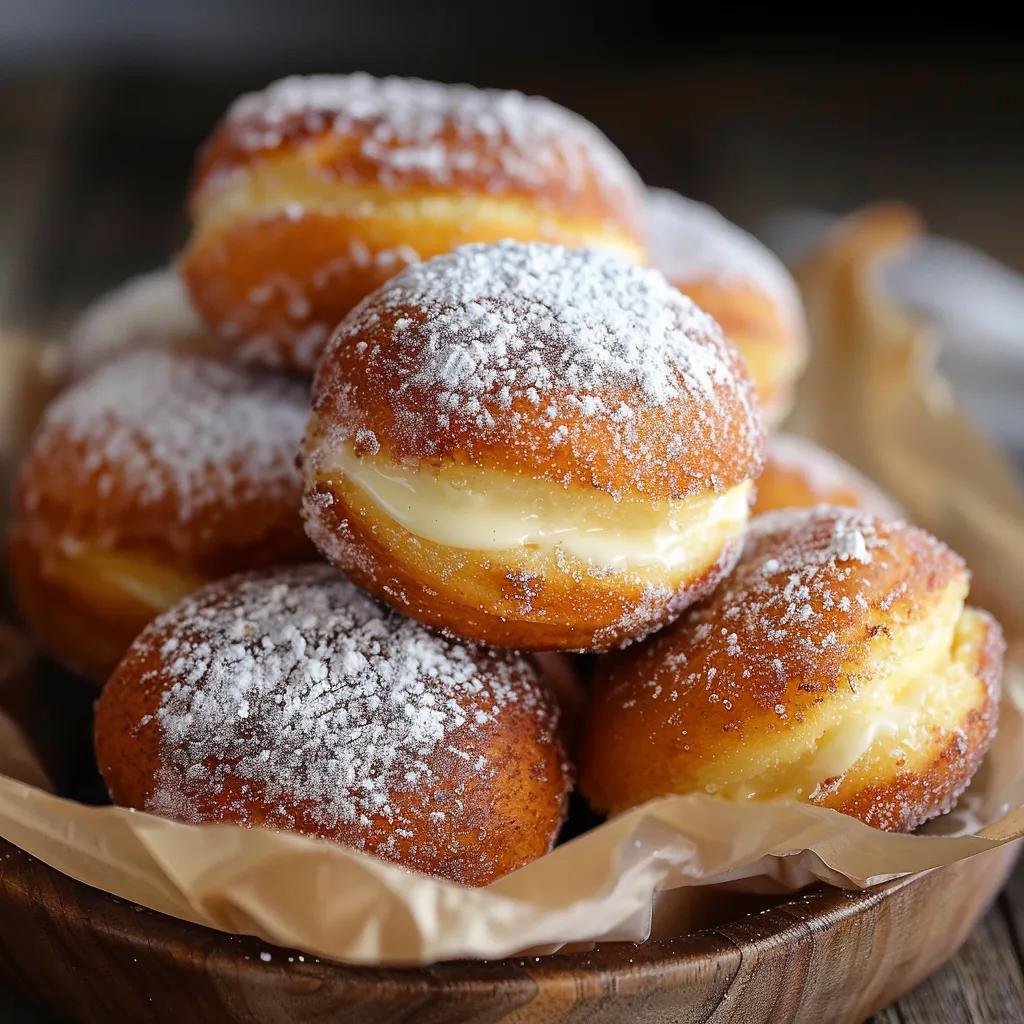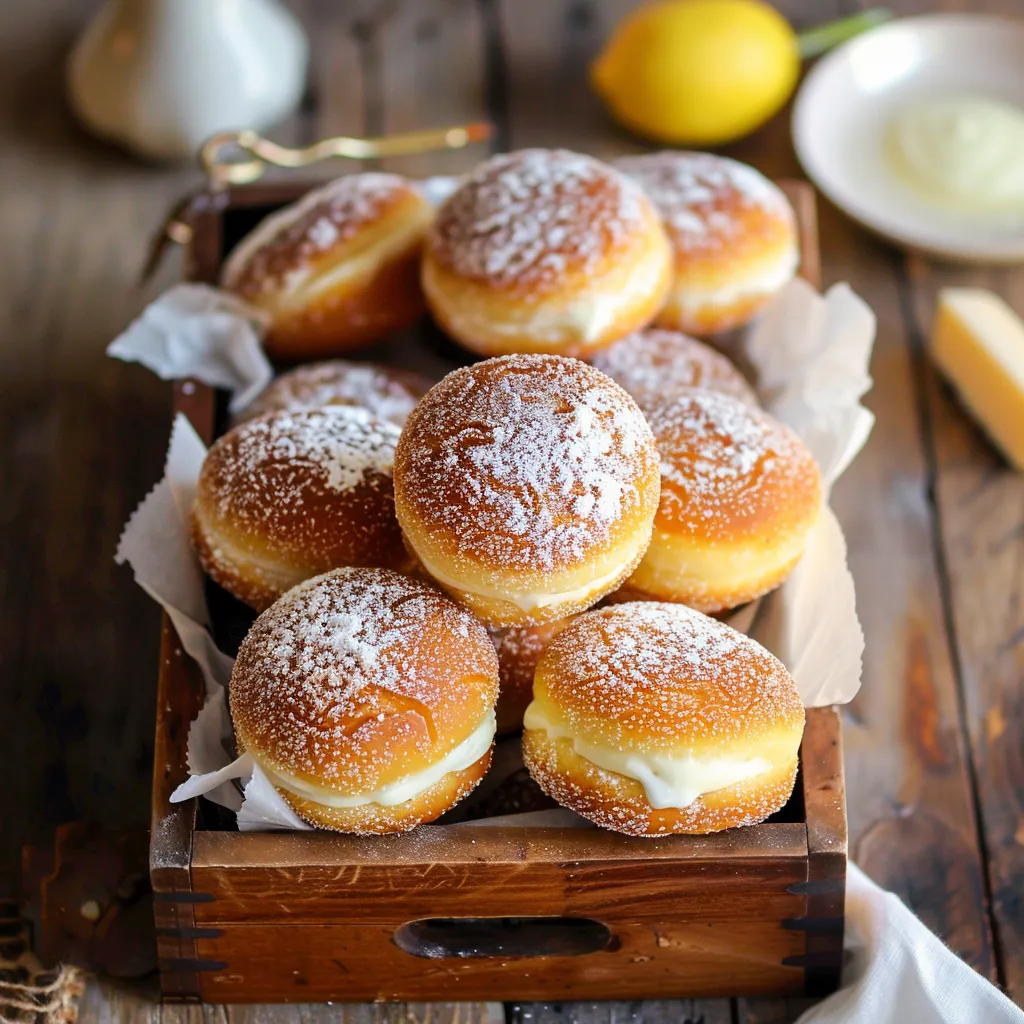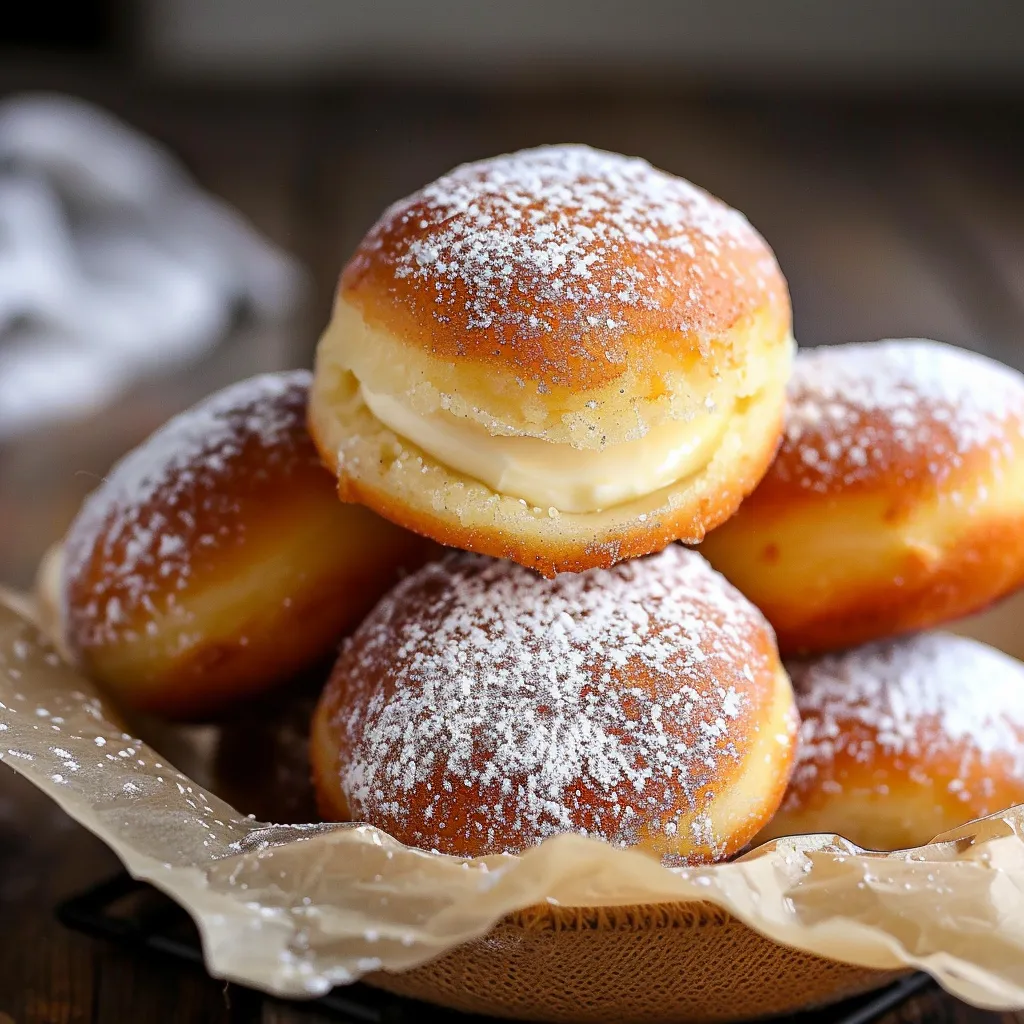 Pin to Favorites
Pin to Favorites
Bite into a pillowy soft, sugar-dusted Bomboloni and experience a moment of pure Italian pastry perfection. The delicate, yeasty dough gives way to rich, velvety pastry cream that oozes from the center – a heavenly contrast of textures and flavors that transports you straight to an Italian café. These traditional Italian doughnuts have been my passion project for years, perfected through countless weekend baking sessions and trips to Italy where I studied the technique of local pasticcerie in Florence and Rome.
Last month, I made these for my son's birthday breakfast instead of a traditional cake. The look on his face when he bit into the vanilla-flecked cream center was priceless. Even my mother-in-law, who rarely compliments my cooking, asked for the recipe and admitted they were better than the ones she remembered from her childhood in Naples.
Essential Ingredients and Selection Tips
- Italian 00 Flour: This finely milled flour is crucial for the delicate texture.
- Whole Milk: Use only full-fat milk for both the dough and the pastry cream.
- Fresh Eggs: Always use room temperature eggs for the dough.
- European-Style Butter: The higher fat content makes a difference in the richness of the dough.
 Pin to Favorites
Pin to Favorites
Detailed Cooking Instructions
- Prepare Your Work Environment:
- Ensure your kitchen is warm (around 75°F) as yeast doughs prove best in slightly warm conditions.
- Create the Perfect Dough:
- In a large bowl or stand mixer fitted with a dough hook, combine 250g Italian 00 flour, 250g strong bread flour, 80g granulated sugar, and 7g fast-action yeast.
- First Prove:
- Shape the dough into a tight ball, place in a lightly oiled bowl, cover, and set in a warm spot to prove until tripled in size.
- Prepare the Italian Pastry Cream:
- Whisk together 4 egg yolks, 100g granulated sugar, and vanilla, then slowly incorporate warm milk and cook until thickened.
- Cool and Store the Pastry Cream:
- Pour the pastry cream into a bowl, press plastic wrap onto the surface, and refrigerate until completely cold.
- Shape Your Bomboloni:
- Roll out the dough to about 1/2 inch thickness and cut into circles.
- Second Prove:
- Let the cut bomboloni prove until doubled in size.
- Prepare for Frying:
- Heat oil to exactly 170°C/338°F and prepare a tray with paper towels for draining.
- Fry to Golden Perfection:
- Fry each bombolone until golden brown, about 2 minutes per side.
- Sugar Coating and Filling:
- Roll warm bomboloni in sugar and fill with pastry cream using a piping bag.
My first attempt at bomboloni years ago was a disaster – dense little hockey pucks with barely any rise. After consulting with an Italian pastry chef friend, I learned that I had rushed the first prove and used milk that was too hot, which killed the yeast.
These bomboloni represent more than just a delicious treat – they're a connection to culinary heritage and the joy of sharing food made with care.
 Pin to Favorites
Pin to Favorites
Frequently Asked Questions
- → Can I make the dough for Bomboloni ahead of time?
- Yes, you can prepare the dough a day ahead and let it rise slowly in the refrigerator overnight (first rise). The next day, let it come to room temperature for about 30 minutes, then shape, allow for the second rise, and fry.
- → What's the difference between Bomboloni and regular doughnuts?
- Bomboloni are Italian-style doughnuts that tend to be lighter, less sweet, and have a more bread-like texture than American doughnuts. They're typically filled rather than having a hole in the center, and are traditionally rolled in granulated sugar rather than glazed.
- → Can I fill Bomboloni with something other than pastry cream?
- Absolutely! While pastry cream is traditional, you can fill Bomboloni with Nutella, jam, chocolate ganache, or even custards flavored with coffee, pistachio, or hazelnut.
- → How do I know when the oil is at the right temperature for frying?
- The recipe recommends using a sugar thermometer to ensure the oil reaches 170°C/337°F. If you don't have a thermometer, you can test by dropping a small piece of dough into the oil - it should sizzle immediately and rise to the surface, browning gradually over about 2 minutes.
- → Why did my Bomboloni collapse or deflate after frying?
- Deflating can happen if the doughnuts aren't fully proofed before frying, if the oil temperature is too low, or if they're filled while still too warm. Make sure they've tripled in size during the second rise, maintain the correct oil temperature, and allow them to cool completely before filling.
